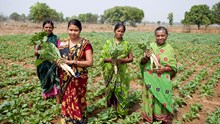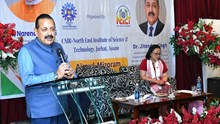
Union Agriculture Minister Shivraj Singh Chouhan has approved the procurement of major pulses and oilseeds in Uttar Pradesh and Gujarat for the Kharif 2025–26 season, aiming to directly benefit farmers. The move ensures 100% procurement of urad (black lentils) and tur (pigeon pea), while also covering moong (green gram), sesame, and groundnut in UP, and soybean, moong, and groundnut in Gujarat. The total procurement is estimated at Rs 13,890.60 crore.
Chouhan chaired a virtual meeting with Uttar Pradesh Agriculture Minister Surya Pratap Shahi, Gujarat Agriculture Minister Raghavji Patel, Union Agriculture Secretary Dr. Devesh Chaturvedi, and senior officials from both states.
The minister emphasised that the entire process must be transparent, digital, and smooth. Both state ministers assured that the procurement would be conducted via digital portals with Aadhaar-based biometric authentication and POS machines to prevent irregularities.
In Uttar Pradesh, 2,27,860 metric tonnes of urad worth Rs 1,777.30 crore and 1,13,780 metric tonnes of tur valued at Rs 910.24 crore will be procured. The state will also buy 1,983 metric tonnes of moong worth Rs 17.38 crore, 30,410 metric tonnes of sesame worth Rs 299.42 crore, and 99,438 metric tonnes of groundnut worth Rs 722.22 crore.
Gujarat will see the procurement of 47,780 metric tonnes of urad valued at Rs 372.68 crore, 1,09,905 metric tonnes of soybean worth Rs 585.57 crore, 12,62,163 metric tonnes of groundnut worth Rs 9,167.08 crore, and 4,415 metric tonnes of moong valued at Rs 38.71 crore.
Chouhan underlined that only genuine farmers should benefit, and middlemen must not exploit the system. Around 350 procurement centres in UP and 400 in Gujarat will use biometric or facial authentication along with POS machines. Pre-registration through NAFED and NCCF ensures that only registered farmers can sell crops at the government-notified minimum support price (MSP), with direct payments into their bank accounts.
The minister added that approved quantities could be revised after the first advance estimates of Kharif 2025–26, ensuring farmers get the maximum benefit. The digital, transparent system is designed to guarantee fair prices and timely payments to all eligible farmers.
















